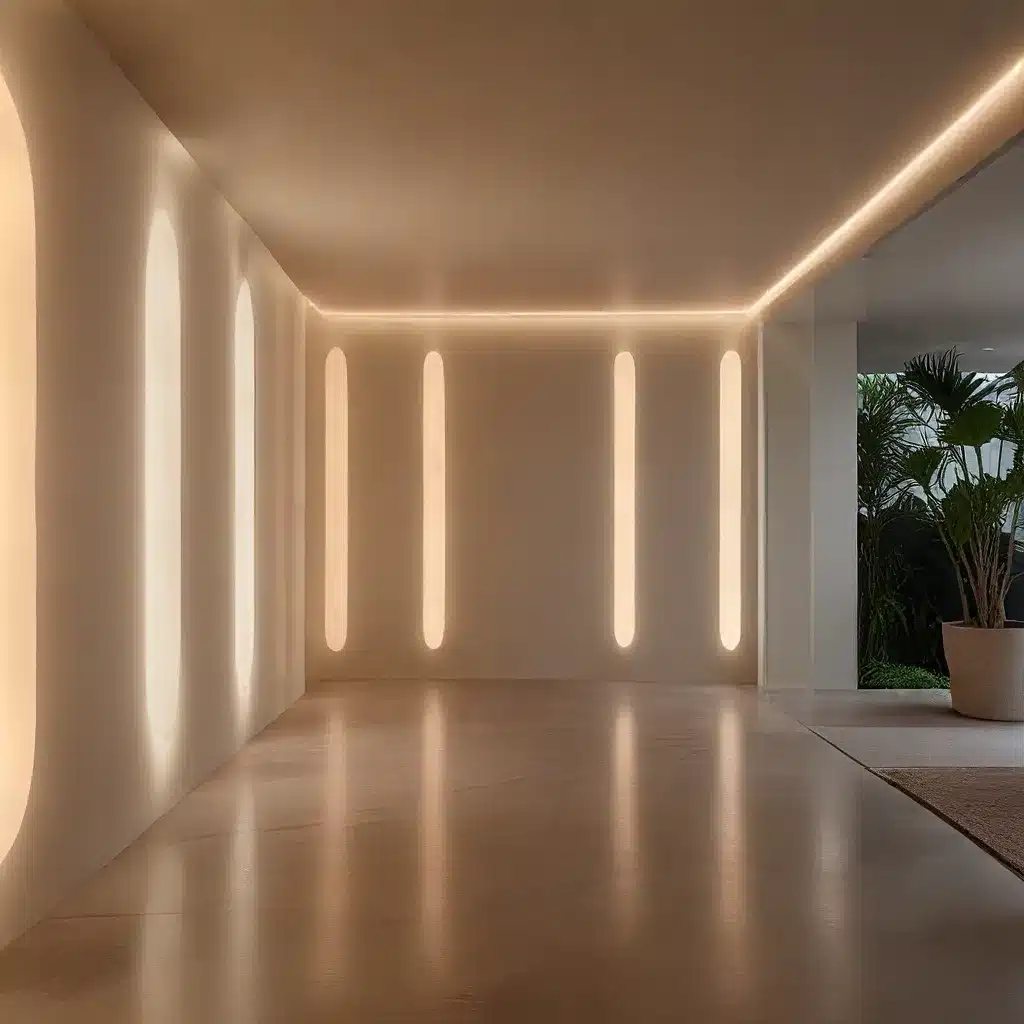
Illuminating Spaces: The Art and Science of Architectural Lighting Design
Lighting is a fundamental element in interior design, with the power to transform spaces, evoke different moods, and create immersive experiences. Architectural lighting design is a delicate balance of art and science, requiring a deep understanding of both the technical aspects of light and the ability to craft emotionally impactful experiences.
At its core, lighting design is about shaping perceptions and evoking desired responses from people within a space. Light has an undeniable impact on our moods and emotions, and designers can leverage this to create specific atmospheres and set the tone for how a space is experienced.
Indirect lighting, for example, can soften emitted rays to create an evenly distributed glow, enhancing the overall ambiance. Warm, soft lighting can create a cozy, intimate ambiance, while cooler, brighter illumination often feels more energizing and invigorating. By carefully controlling the intensity, color temperature, and distribution of light, designers can intentionally cultivate specific atmospheres and evoke desired emotions.
Strategic Lighting: Accentuating Architecture and Guiding Experiences
Beyond ambiance and emphasis, lighting holds the power to stir emotions and create truly memorable experiences within architecture. Thoughtfully designed lighting can evoke a sense of awe, wonder, or tranquility. For instance, the soft, diffused light that filters through the perforated dome of the Louvre Abu Dhabi by Jean Nouvel creates a metaphorical “rain of light” that tells the story of Arabian architecture.
Strategic lighting plays a crucial role in accentuating the architectural details and elements that define a space’s character. Linear lighting is particularly effective in highlighting asymmetrical architectural features, emphasizing layouts that do not follow a rigid design pattern. Accent lighting can draw the eye to unique textures, curves, or materials, while grazing light along a wall can reveal its dimensionality. Used effectively, lighting becomes a way to sculpt volumes and guide the viewer’s focus.
The Artistry of Lighting Design
In some architectural works, lighting becomes more than just a supportive element – it becomes the centerpiece and driving aesthetic. Lighting fixtures can enhance a space by creating captivating and aesthetically pleasing features, adding significant visual interest. Projects like the curved, seemingly holographic lighting installation of the Calgary Central Library by Avalon Holographics blur the lines between illumination and sculptural form, where light transcends its functional role to become an artistic design statement unto itself.
Behind effective architectural lighting schemes are fundamental principles that guide critical decisions around light sources, placement, control, and layering. Lighting systems play a crucial role in human well-being and architectural design, impacting circadian rhythms and creating aesthetically pleasing environments.
Layers of Light: Crafting Cohesive Environments
Masterful lighting rarely relies on just one type of illumination. Instead, multiple layers of light are carefully combined to produce a cohesive, multi-dimensional environment. Ambient luminaires might provide overall illumination, while task sources enable specific activities, and accent lighting adds depth by highlighting key elements.
This strategic layering and balance of light sources culminates in a richer, more intentional atmosphere. Ambient, task, and accent lighting – when carefully considered and integrated – create a harmonious and visually compelling space that caters to the practical needs and emotional responses of the occupants.
Integrating Natural and Artificial Light
Architectural lighting design is a highly contextual practice, with countless factors influencing the appropriate lighting approach for a given space. Prioritizing natural lighting is essential due to its numerous health benefits and energy-saving aspects. Designers must carefully analyze the spatial uses and bridge natural and artificial light to create balanced, energy-efficient illumination.
Smart control systems allow architectural lighting’s flexibility, efficiency, and functionality to be maximized. Automated dimming responds to daylight conditions, while zoned controls enable different space areas to be lit independently as needed. User controls, such as switches, sliders, and apps, give occupants personalized lighting control, further enhancing the overall experience.
Lighting for Specific Architectural Applications
Each broad category of architectural application carries its own unique lighting requirements and opportunities. Residential lighting nurtures comfort, warmth, and human-centric needs, while commercial spaces demand bright, energy-efficient lighting for visibility and safety. Cultural venues like museums prioritize fully controllable illumination to protect light-sensitive artifacts while allowing impactful exhibition lighting.
The most successful architectural lighting designs harmonize big-picture considerations like these with thoughtful adherence to core principles, resulting in environments that feel as functional as they are atmospheric.
The Future of Architectural Lighting Design
Lighting technology is progressing rapidly, bringing more sustainable, controllable, and dynamic illumination capabilities to architectural design. Energy-efficient LED and OLED sources enable complex color-changing scenes, while circadian lighting aligns interior environments to our innate human cycles. IoT integration allows lighting to be seamlessly automated and controlled remotely.
Beyond just technological advances, the lighting design field itself is evolving as more artists and designers boldly experiment with unconventional lighting treatments and integrated lighting-architectural forms. We are only beginning to realize lighting’s full transformative potential in the built environment.
As technical potential and creative expression intertwine, the future of architectural lighting design shines brilliantly, continuing to push how illumination enhances human experiences with built spaces in new, meaningful, and poetic ways. From the warm glow of a cozy living room to the dramatic illumination of a museum gallery, lighting has the power to transform the ordinary into the extraordinary.
Explore the possibilities of Urban Grace Interiors and discover how our team of design experts can create lighting solutions that evoke emotional responses and enhance the overall living experience in your home.

